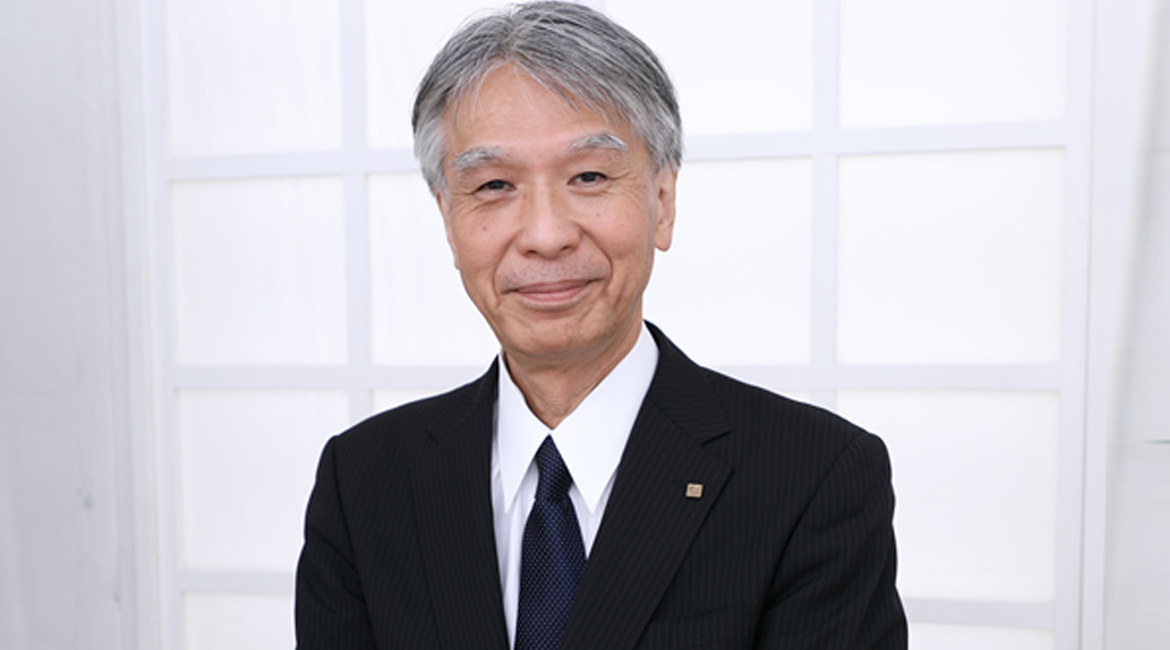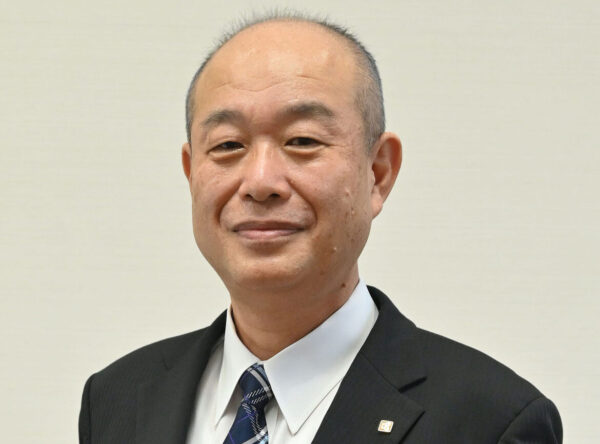Positive financials, an expanding production inkjet line, software, and new A4 products position Kyocera for future growth.
Above: Hironori Ando
Every four years, The Cannata Report has traditionally traveled to Japan to meet with top-level executives to learn about the latest initiatives of the “Big Six” OEMs, including product development schedules and strategies. Because of the ongoing COVID-19 pandemic and restrictions on traveling to Japan, we conducted this year’s visits virtually. Our first meeting, on June 27, was with Hironori Ando, president and executive director of Kyocera Document Solutions, Inc.
Strong Financially
When we visited Kyocera at its Osaka headquarters in 2018, we knew the company was financially strong, with significant cash reserves. After two years of COVID-19, supply chain issues, and chip shortages, we were curious to learn if the company was still in a favorable financial position. Ando responded by highlighting Kyocera’s performance during its past fiscal year as well as providing us with projections for the current fiscal year, which runs through March 2023.
“For Kyocera Corporation because of the demand for the 5Z or semiconductor package, in all segments, we were able to over-achieve during the [past] fiscal year for revenue and profit,” said Ando. “We plan to hit 2 trillion Japanese yen, which is $15 billion U.S., in this fiscal year. In the near future, we are aiming to achieve 3 trillion yen, which is $23 billion U.S., with proactive investment and proactive development of new business.”
Ando also shared Kyocera Document Solutions (KDS) performance during this time. Last fiscal year, which ended in March 2022, KDS achieved 363.6 billion yen, the equivalent of $2.8 billion U.S. dollars in revenue with a profit of 33 billion Japanese yen or $256 million U.S. dollars. Ando attributed this performance to a resurgence in the office business, which had slowed down in 2020 because of COVID-19.
Ando’s projections for the current fiscal year were optimistic despite current challenges. “We are going to try to strengthen our financial position,” he said. “Although we are facing many logistical issues and increased material prices, we are aiming to achieve 400 billion Japanese yen ($3 billion U.S. dollars). We are also aiming for a profit of 42 billion yen ($323 million U.S. dollars) for this fiscal year.”
Backorders and Chip Shortages
Any interview with Japanese executives will inevitably include a discussion of the current backorder and chip shortage challenges and what the OEMs are doing to mitigate those situations. Ando was honest, noting that the logistical situation has not improved at Kyocera’s factories in Vietnam and China largely because of an increase in in-transit inventory, a situation the company is focused on controlling.
Backorders have particularly impacted A3 machines. Originally, Kyocera was manufacturing those devices in China but has now expanded A3 manufacturing to Vietnam to help resolve the backorder problem. Ando also noted the backorder situation for A3 in the U.S. will be resolved soon because of expanding manufacturing to Vietnam, although he offered no specifics as to when.
A4 is another story. “We still have backorders, and that’s because of the lack of controller chips,” acknowledged Ando. “We expect this to continue until the end of this fiscal year (March 2023).”
However, Kyocera has a plan to resolve this issue and will introduce new A4 devices with a different type of chip, allowing the company to step up production and reduce backorders. The new machine will go into production in August 2022, and Ando expects those devices to reach the U.S. during the second half of Kyocera’s fiscal year.
The Potential for E-commerce
Recently, The Cannata Report has reported on the emergence of e-commerce in the dealer channel, particularly for commoditized products such as A4. We asked Ando for his view on the topic. “E-commerce has loads of potential for entry-level and mid-range products,” he said. “We are doing well in the UK and Germany with e-commerce and recently started selling products through e-commerce in Japan as well.”
Committed to Print and Expanding Inkjet Production
Kyocera remains committed to print, with Ando noting that there is still a need for paper, particularly in the public sector, education, and medical environments. “We want to provide the paper printout which is needed by customers for the best cost performance while remaining environmentally friendly,” he said. “Because of the combination of our hardware and software, we can provide these solutions to the customer. This is an important area for us.”
From a technical perspective, Ando discussed the advantage of various Kyocera technologies, such as its electro photoconductor technology and its inkjet head technology. “Because of those technology combinations, we can develop a printing device for the future,” said Ando, emphasizing the need for an environmentally friendly product.
The pandemic slowed down Kyocera’s progress in the inkjet production space after it introduced the 15000c in 2018. A new inkjet production device for the graphic arts market is in development as well as a new inkjet machine for the textile industry—both using Kyocera technology. “At this moment, our current product, the 15000c is not able to print on offset coated paper,” observed Ando. “Our new product will be able to print on offset-coated paper.”
According to Ando, Kyocera is planning to introduce inkjet products that offer high-quality printing, are easy to maintain, and have low maintenance costs. “We want it to handle high-volume applications but also at high quality,” added Ando. He acknowledged that the hardware price of the next generation of the 15000c might be more expensive, however, the total cost of operation will be more attractive, emphasizing that this will be a product for the printing industry, not the office.
In addition, Ando reported that the company plans to expand into labeling and packaging. His team is currently developing these products.
Document Solutions
Two growth areas for Kyocera are ECM (Enterprise Content Management) and ICT (Information and Communications Technology). Our conversation with Ando focused on ECM, which fits under ICT at Kyocera along with mobile solutions (5G phones), semiconductor components, and electronic components. The emphasis on document solutions in the document imaging sector is an important element of Kyocera’s future strategy.
“We want to not only be a solution provider but a service provider,” observed Ando. “Because the customer has an MFP and a printer, we want to provide comprehensive service through our ICT business.” The goal, he said, is for this to encompass more than 50% of Kyocera’s business. “Talking about the MFP and printer hardware value chain, we are adding on the software and need to strengthen alliances with software vendors to proactively invest and manage that area,” said Ando.
Since 2015, Kyocera has been actively acquiring ECM companies, including Ever Team Software SAS (Everteam), a France-based ECM solutions provider, in 2020; Alos Solution AG, a provider of capture and ECM solutions based in Germany and Switzerland, in 2018; DataBank, the largest North American reseller of Hyland Software, in 2017; and Ceyoniq Group, a German-based provider of ECM, in 2015. Besides the products that Kyocera offers through those acquisitions, Ando revealed that Kyocera is developing its own ECM product.
Asked about the difference between Hyland Software and the other ECM products, including what Kyocera is developing, Ando explained that Hyland is only sold in the U.S. and is targeted at corporate and large enterprise customers. The other three products focus on specific regions in Europe where the products were developed and are primarily designed for midsize companies. “At this time, we have a clear differentiation between the products,” said Ando. “We want to strengthen them and enlarge our business for these products.”
Ando also reported that Kyocera is looking to expand the ECM business in the U.S. through DataBank, which continues to grow and add new customers. “We will keep developing the Hyland business in the U.S.,” he emphasized.
ECM isn’t the only software segment where Kyocera is looking to strengthen its presence. It also has partnerships with Microsoft and Google, both of which offer products for the office. Kyocera is in the Microsoft Partner Certification Program and is currently a Silver Partner and will soon be a Gold Partner. To achieve those certifications, Kyocera must demonstrate competency in various areas of business and technology, such as applications and infrastructure, business applications, data and AI, and modern workplace and security. As for its partnership with Google, Kyocera is focused on Box for Google Workspace, which allows users to create and collaborate with teams in real-time.
“We want to develop our own software that is linked to those products, and we want to enlarge globally and add value to the MFP and printer to differentiate ourselves from competitors,” said Ando.
Frank Gives Thanks
We want to thank Hironori Ando, president, Kyocera Document Solutions Inc., for his warm reception during our virtual interview. Kyocera, who was such a gracious host when we visited Japan in 2018, was the first to welcome the opportunity and agree to answer our questions. Ando answered all questions and responded to all follow-up questions, and did not shy away from discussing tough subjects, such as the broken supply chain. That is the value of visiting Japan and meeting with OEM executives. You gain their trust and their respect. You will be hearing from the other manufacturers throughout the rest of the year in The Cannata Report.
_________________________
To become a subscriber, visit www.thecannatareport.com/register or contact cjcannata@cannatareport.com directly. Bulk subscription rates are also available upon request and included in our media kit.




